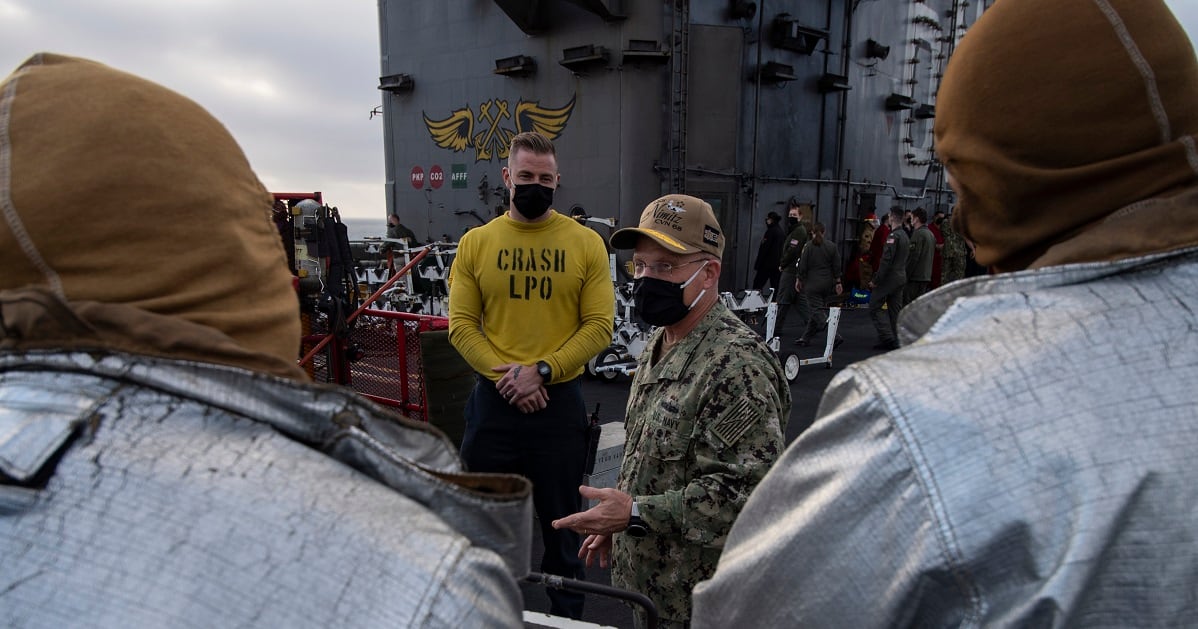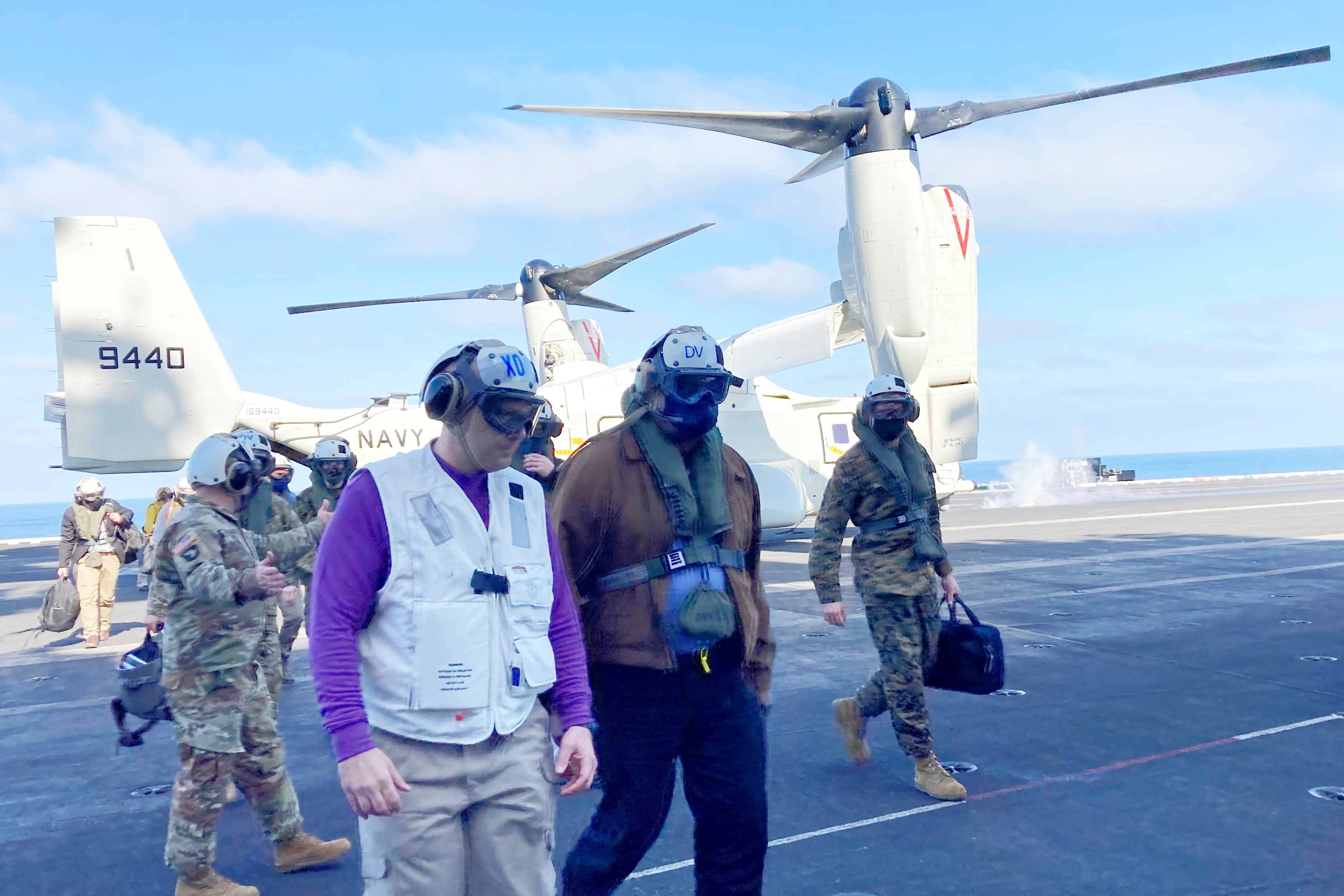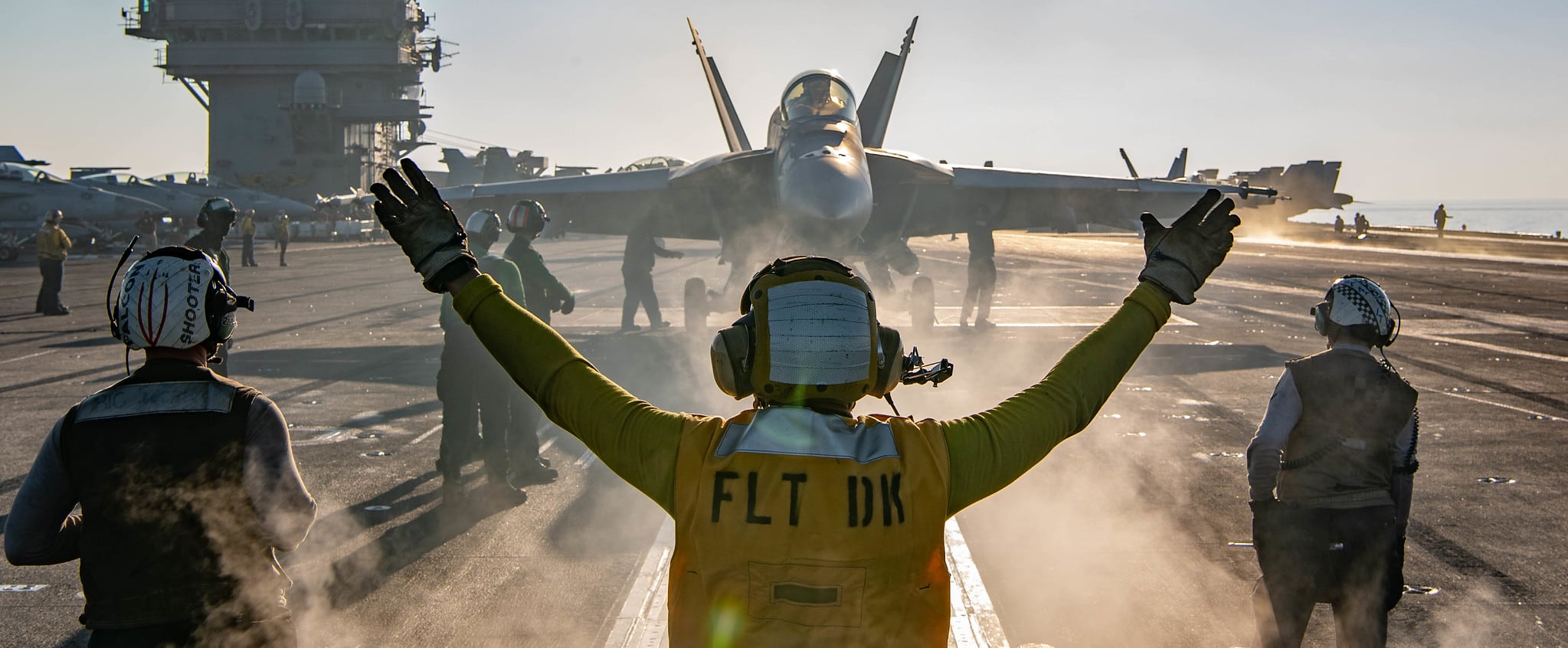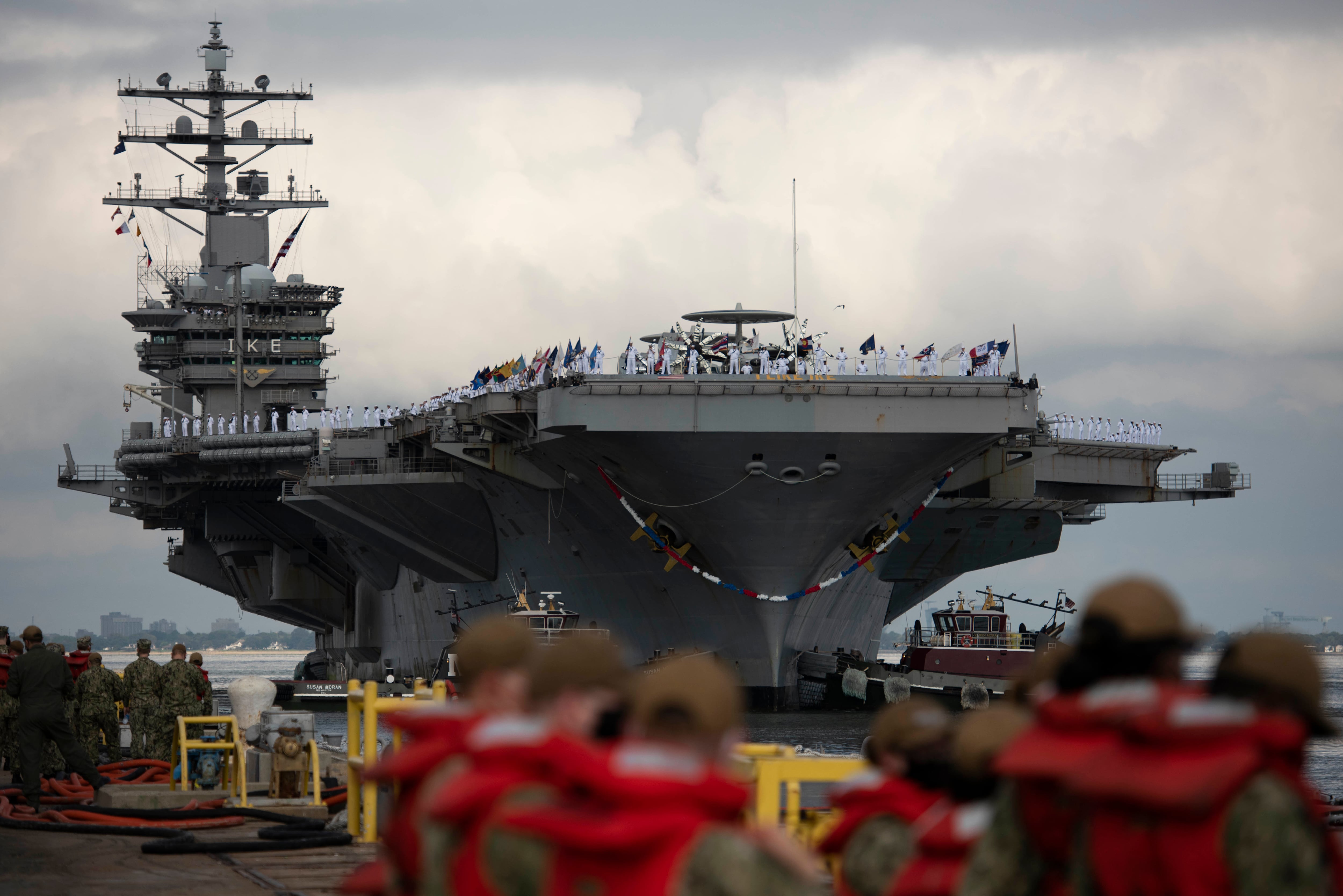ABOARD AIRCRAFT CARRIER USS NIMITZ ― Fewer than seven months have passed since the aircraft carrier Dwight D. Eisenhower returned from sea, with no port calls due to the COVID-19 pandemic, but the crew and its strike group are getting ready to head out again imminently.
Standing in the hangar of the carrier Nimitz on Thursday, floating off the West Coast as it returns from its own record-smashing 10-month deployment, Defense Secretary Lloyd Austin told reporters he hadn’t yet decided whether Ike would replace Nimitz in the Middle East.
RELATED

Of particular concern is whether a persistent Middle East carrier presence is necessary to keep Iran in line, an argument often made by U.S. Central Command boss Marine Gen. Frank McKenzie.
“I’ve not reached a decision on that yet,” Austin said, adding that he would confer with combatant command and Pentagon leadership in the coming days.

Fulfilling that consistent request currently means deploying a limited number of aging carriers for long stretches, multiple times within a 12-month span, giving sailors little time to decompress and even less time to perform maintenance that piles up the longer the carriers are in service.
Out of 11 commissioned carriers, five are in maintenance, two are returned or just returning from a deployment, two are preparing for their next and the newest model is not yet ready for a full-fledged deployment.
If not the Middle East, Ike could head to U.S. Indo-Pacific Command as part of a two-carrier patrol alongside Theodore Roosevelt, which just relieved the Japan-based carrier Ronald Reagan after five months underway, the longest patrol for a forward-deployed carrier in 20 years.
Balancing the Iran threat with the push to for more presence in the eastern Pacific will be a major feature of Austin’s tenure at the Pentagon.
“I’d like to have a carrier in every spot in the world, you know? But it’s just not possible … because we don’t have those kinds of resources,” he told Military Times.
The Biden administration, like its predecessor, is reviewing placement and employment of U.S. troops around the world, to include the Middle East, where tensions with Iran persist, but troops have been reduced to 2,500 each in Iraq and Afghanistan.
That’s expected to finish this summer. Theoretically, Austin said, he would be open to turning down one of CENTCOM’s requests, which isn’t unprecedented.
RELATED

“We’ve made decisions in the past to gap the carrier in the Middle East, and as we do that, we do things to make sure that we have resources in the right place to ensure we can respond to contingencies when they arise,” he said, which include Air Force assets able to scramble and deploy weapons when called upon.
Austin was mindful of the human cost of long and repeated deployments, taking to Nimitz’s loudspeaker on Wednesday to address the crew and thank them for holding together.
“…they know that at some point there’ll be some unexpected things that will happen, some requirements that are a little but tougher,” he told reporters later, asked about the strain it puts on sailors when there are only months between deployments, or in Nimitz’s case, where a six-month underway turned into 10.
Austin likened the extension to the early days in Iraq, when year-long deployments became 15- and 18-month slogs.
“So as secretary, what I want to do is make sure that — No. 1, going forward, we do everything we can to minimize that kind of stress, that we do what’s necessary to take care of our equipment, but most importantly our people, our families,” he said. “I know the impact that that can have.”
And that may mean some periods where Iran won’t have a strike group floating off of its coast.
“... there’s going to be gaps at periods of time and again, we’re going to look at ourselves and make sure our resources are in alignment with our priorities, based on our strategy going forward,” Austin said.
Meghann Myers is the Pentagon bureau chief at Military Times. She covers operations, policy, personnel, leadership and other issues affecting service members.




